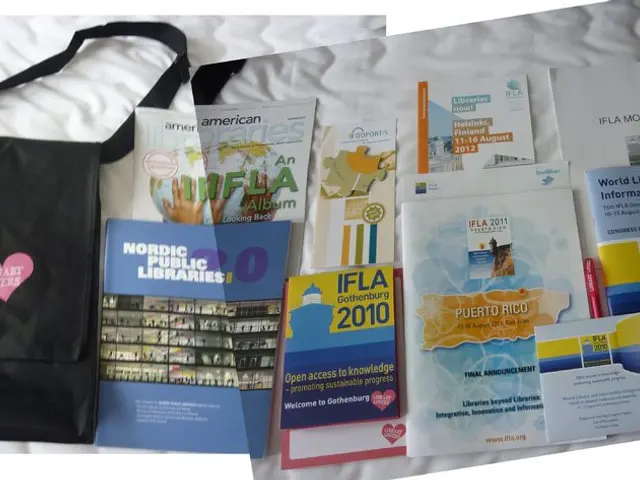Maintaining a Comfortable Indoor Environment: Stay Cool Behind the Wheel During Summer Heatwave
Driving in a sweltering car isn't just unpleasant, it can be detrimental to both one's health and driving safety. The Germán Technical Inspection Association (GTÜ) and the German Automobile Club (ADAC) concur that high temperatures in the vehicle can impair driving abilities, even at seemingly moderate levels of 27 degrees Celsius. As the temperature rises from 25 to 35 degrees, the accident risk increases by 20 percent, akin to driving with a blood alcohol concentration of 0.5 percent.
A Hot Car Before Starting the Engine
The heat can build up in the car before you even start driving, especially with prolonged exposure to direct sunlight. In severe cases, the cabin temperature could reach 60 degrees or higher, as warned by GTÜ. To mitigate this, open all doors, the trunk, and, if possible, the sunroof for increased ventilation. This helps create a draft, reducing the interior heat.
Proper Air Conditioning Usage
Modern cars often come equipped with air conditioning, but rapid fluctuations in temperature can lead to circulatory problems and colds. Setting the air conditioning between approximately 22 and 25 degrees Celsius provides an optimal balance. Initially, set it to maximum cooling power after starting the vehicle for a brief period, followed by a gradual reduction. Avoid directing cool air directly at your body or face, as this may cause muscle tension or colds, according to the ADAC. Instead, distribute the airflow evenly throughout the vehicle.
Parking in Shade
When parking in hot weather, seek shade whenever possible. The sun's position changes throughout the day, so it's essential to adjust parking spots accordingly. Various products, such as retrofittable tinting films, all-around window covers, or reflective sun protection films, can aid in reducing cabin heating. In a practical test conducted by the ADAC, the "half garage" method kept the cabin around ten degrees cooler than without protection, making it the most effective method. The second-best method was placing a sun protection film on the front windshield, reducing the test cabin temperature by eight degrees compared to the unprotected cabin.
Child Safety
During extended trips, children should be protected from harmful UV rays. Equipment for the rear side windows, such as sun visors or approved films, is available to safeguard children from prolonged sun exposure. Each system has its pros and cons, so it's advisable to consult a professional before making a purchase. To minimize UV exposure, it's also recommended to start long trips early in the morning, in the evening, or at night.
In addition to these strategies, regular maintenance of the cooling system is crucial for effective heat dissipation. Inspect the cooling fans, ensure regular coolant flushes, and check all related components for signs of wear or damage to maintain optimal car performance during hot weather. By adopting these practices, one can maintain a comfortable driving environment and minimize associated health risks during hot rides.
- Proper automotive care includes addressing issues related to climate change, as high temperatures in the vehicle can impact both health and driving safety.
- The German Technical Inspection Association (GTÜ) and the German Automobile Club (ADAC) emphasize the importance of tackling these issues for workplace wellness and overall health-and-wellness.
- Fitness-and-exercise routines can help enhance one's ability to handle increased temperatures, as physical activity improves circulation and thermoregulation.
- In the realm of environmental-science, reducing carbon emissions is crucial for long-term transportation sustainability.
- Nutrition plays a key role in maintaining energy levels and cognitive function while driving, with snacks like nuts, fruit, and water providing much-needed fuel and hydration.
- The industry must work towards addressing these issues, implementing industry-wide best practices for vehicle design, cooling systems, and work-life balance.
- CBD, a popular wellness ingredient, might have potential benefits for managing stress and anxiety related to long drives.
- Public-transit systems can be a more eco-friendly alternative to driving during hot weather, reducing carbon emissions and promoting a sustainable lifestyle.
- Cooking methods like grilling and oven use generate additional heat, making it crucial to prioritize energy-efficient appliances and outdoor-living spaces with proper ventilation.
- Food-and-drink choices should also consider the impact on the environment, with locally-sourced ingredients and reusable packaging promoting environmental-science awareness.
- Finance plays a critical role in adopting greener practices, as investments in energy-efficient vehicles, appliances, and homes support a more sustainable future.
- Transportation should be a priority for the global-cuisines industry, as the exchange of food products requires efficient logistics and careful handling to ensure quality and freshness.
- Leadership in these sectors should prioritize diversity-and-inclusion, fostering a more representative and innovative workforce that drives progress in health-and-wellness, environmental-science, and the industry as a whole.
- Lifestyle choices play an essential role in promoting wellness, with regular exercise, balanced nutrition, and mental-health practices improving overall health and well-being.
- Outdoor-living spaces provide opportunities for fitness-and-exercise, healthy-cooking, and engaging with local eco-systems, promoting a connection to nature and boosting mental health.
- Books and educational resources on food-and-drink, sustainability, finance, environmental-science, and other topics can help individuals make more informed choices for their personal and professional lives.
- Car-maintenance is crucial for ensuring a comfortable driving environment during hot weather, with regular checks and service appointments ensuring the cooling system operates efficiently.
- Social-media can be a means to share tips, strategies, and experiences related to workplace wellness, sustainability, and overall health-and-wellness practices.
- Entertainment, such as movies-and-tv, music, and online-education, can provide opportunities for personal growth and relaxation during travel or leisure time.
- Electronic devices, like smartphones and laptops, can drain batter while driving, so practice efficient use of these technologies to conserve energy during hot weather.
- Celebrities, through their influence and resources, can contribute to promoting awareness and change in areas such as sustainable living, environmental-science, and leadership in businesses and careers.
- Safety on the roads is a pressing issue, with car-accidents a major concern during hot weather. Adopting car-maintenance best practices, driving defensively, and adhering to speed limits can help reduce the risk of accidents.
- Adventure-travel, which often involves off-road driving and prolonged exposure to hot temperatures, requires careful planning to maintain safety, health, and well-being.
- Adequate budgeting, based on personal-finance management and debt-management strategies, is essential for funding car-maintenance, travel, and other expenses.
- To conserve energy and reduce costs, consider strategies such as data-and-cloud-computing, which allows for remote work, reducing daily commutes and decreasing carbon emissions.
- Sustainable-living practices extend beyond the car, with budgeting, recycling, and eco-friendly home-and-garden choices all contributing to reducing one's environmental footprint.
- Baking and cooking can be economic and enjoyable hobbies, although it's important to follow health-and-wellness guidelines for healthy-cooking, portion control, and balanced nutrition.
- Lifelong learning, through formal education or self-directed study, is necessary for staying informed on topics like science, technology, environment, global cultures, and career-related skills.
- By adopting these practices, one can improve both their personal well-being and their impact on the environment, making a positive difference for future generations while also promoting a more sustainable and eco-friendly lifestyle.








